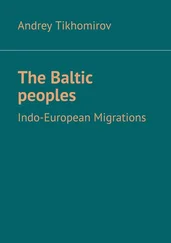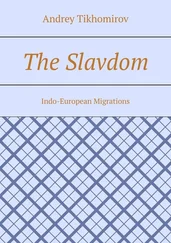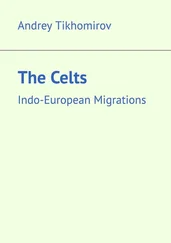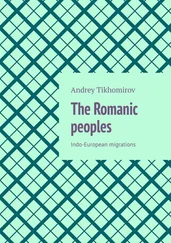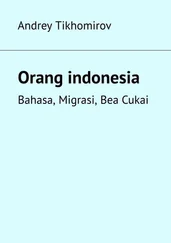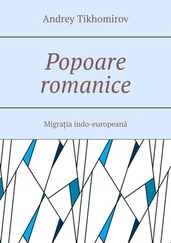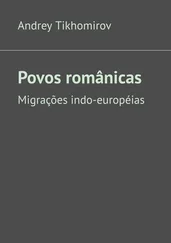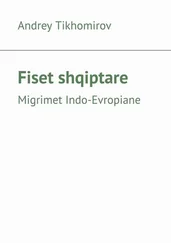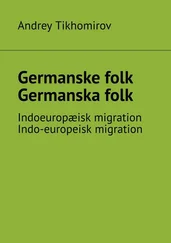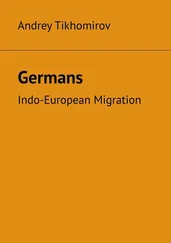The reason for such a wide resettlement of tribes that left the catacomb mounds, you need to look in the nature of their economy, the process of development of cattle breeding Began, the tribes became more mobile; agriculture in their lives played a lesser role, the Needs of nomadic cattle breeding caused resettlement in large spaces. Because of the pastures there were military clashes. The domestication of animals and the protection of the herds was a male. Therefore cattle belonged to the man and was inherited not by the maternal sort, and sons of the man. The Patriarchy came, in the oldest beliefs it was reflected in the cult of God the father that subsequently entered all monotheistic religions as the main dogma. This led gradually to the concentration of property in individual families and eventually split the ancestral community, which is now opposed to a large Patriarchal family, it was several generations of direct relatives on the paternal line, under the authority of the oldest. The growth of wealth and the emergence of wealth inequality has entailed the emergence of slavery. It is noted by frequent violent burial in catacombs of slaves a place with the man. Cattle were the first form of wealth here, which allowed to accumulate significant surpluses.
The penetration of the Western tribes, who left catacomb burial mounds, were not confined to the territory of Poland. Catacomb burial can be traced back to Slovenia. The so-called corded ornament at a local utensils were intimately connected with the ornamentation of the vessels from the catacomb burial mounds. This ornament was distributed at the end of the III Millennium BC on the territory of present Hungary, Austria (in Salzburg). At the beginning of the II Millennium BC in Europe, especially in Northern and Central, was widespread: corded ornamentation of utensils. In some areas there were amphorae of the North Caucasian forms (e.g., Saxo-Thuringian pottery) and spread the typical Yamna and catacomb burials of the decoration, especially eslovenia pins.
Significant changes occur in the economy of the European population. There is a cattle and in many areas it is becoming a major sector of the economy. The economy and culture of more ancient tribal associations are changing in this direction. At the same time, similar changes are taking place in the territory, which was recently occupied by tribes that created the Trypillian culture.
All these facts indicate that at the end of the Eneolithic Europe experienced profound changes caused by the penetration of the West from the steppes of Eastern Europe population, which carried with it a lot of new technology, agriculture, ceramic production and other fields of culture.
This confirms the assumption of researchers-linguists that the tribes speaking the oldest Indo – European languages-of Eastern origin, and this explains the presence of related languages of the Indo-European family in vast spaces from Indus to Western Europe.
In Central Europe and on the Rhine, tribes coming from the East met and mingled with another, Western group of tribes that spread from Spain (the so-called “bell-shaped Cup tribes”). This confusion could play a decisive role in the process of extending further to the West Indo-European languages, subordinating here the old languages of Neolithic Europe and forming new languages-Celtic and other ancient Western European groups of Indo-European family languages, a Similar process took place in the early II Millennium and in the forest-steppe zone of Eastern Europe. It also penetrated southern tribes related to Dnieper-desninsky group of middle Dnieper tribes. Their advance marked the early monuments of the so-called fatyanovo culture, open first in Bryansk and then in the Moscow region. Later they spread throughout the Volga-Oka interfluve, developing cattle breeding, high forms of metallurgy and ceramics still unknown to the local population. However, here their fate was different than in Western Europe. In the forest areas of the Volga-Oka interfluve, they were unable to successfully apply their southern forms of farming and were absorbed by local tribes. Treatment of bronze reaches its highest development; in the early burials of the tribes “carcass” of culture found molds for the manufacture of such sophisticated guns, which was a battle-axe, the characteristic type at the beginning of the II Millennium BC spread from Mesopotamia through the Caucasus to southern Russian regions. Bronze cast also daggers, spears, arrows and jewelry – earrings, bracelets and plaques sewed on clothes. In the early period of the existence of these cultures cast bronze, apparently, was carried out of the house. However, with the development of technology of casting and complexity of the forms of products bronze began to engage specialists – casters. Some of them lived in communal villages, catering to the needs of the community, while others gradually broke away from the community, turning into traveling craftsmen working to order, with their tools, stock of raw materials and semi-finished products. By the end of the II Millennium BC the number of such wayfarers especially increased. Before us came a lot of their warehouses containing molds, bronze ingots, as well as harvested guns and weapons. Such warehouses are found and in the territory occupied by tribes of “srubny” culture and on many parts of Western and southern Siberia and Kazakhstan.
The fire played from the earliest times in the life of peoples huge value. Its use by men became the cornerstone of the formation of the civilization, which exits by its roots to the deepest antiquity. The most ancient settlings of people have traces of bonfires.
The place Arkaim (South Ural) is generally dated to the 17th century BC. It was a settlement of the Sintashta-Petrovka culture. The site was discovered in 1987 by a team of Chelyabinsk scientists who were preparing the area to be flooded in order to create a reservoir, and examined in rescue excavations led by Gennadii Zdanovich. At first their findings were ignored by Soviet authorities, who planned to flood the site as they had flooded Sarkel earlier, but the attention attracted by news of the discovery forced the Soviet government to revoke its plans for flooding the area. It was designated a cultural reservation in 1991, and in May 2005 the site was visited by Russia President Vladimir Putin.
Although the settlement was burned and abandoned, much detail is preserved. Arkaim is similar in form but much better preserved than neighbouring Sintashta, where the earliest chariot was unearthed. The site was protected by two circular walls. There was a central square, surrounded by two circles of dwellings separated by a street. The settlement covered ca. 20,000 m2 (220,000 sq ft). The diameter of the enclosing wall was 160 m (520 ft). It was built from earth packed into timber frames, and reinforced with unburned clay brick, with a thickness of 4—5 m (13—16 ft). and a height of 5.5 m (18 ft). The settlement was surrounded with a 2 m (6 ft 7 in) -deep moat.
There are four entrances into the settlement through the outer and inner wall with the main entrance to the west. The dwellings were between 110—180 m2 (1,200—1,900 sq ft) in area. The outer ring of dwellings number 39 or 40, with entrances to a circular street in the middle of the settlement. The inner ring of dwellings number 27, arranged along the inner wall, with doors to the central square of 25 by 27 m (82 by 89 ft). The central street was drained by a covered channel. Zdanovich estimates that approximately 1,500 to 2,500 people could have lived in the settlement.
Surrounding Arkaim"s walls, were arable fields, 130—140 m by 45 m (430—460 ft by 150 ft), irrigated by a system of canals and ditches. Remains of millet and barley seeds were found.
The 17th century date suggests that the settlement was about coeval to, or just post-dating, the Indo-Aryan migration into South Asia and Mesopotamia (the Gandhara grave culture appearing in the Northern Pakistan from ca. 1600 BC, the Indo-European Mitanni rulers reached Anatolia before 1500 BC, both roughly 3,000 kilometres (1,900 mi) removed from the Sintashta-Petrovka area), and that it was either an early Iranian culture, or an unknown branch of Indo-Iranian that did not survive into historical times.
Читать дальше

